Catia S. Silva
Predicting Misinformation and Engagement in COVID-19 Twitter Discourse in the First Months of the Outbreak
Dec 23, 2020

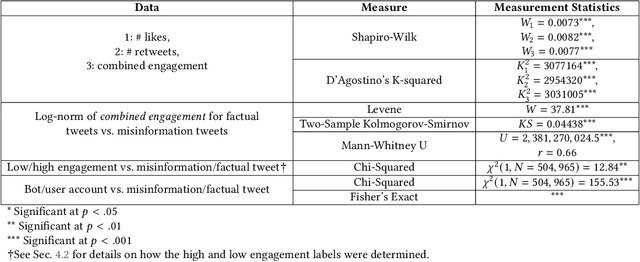
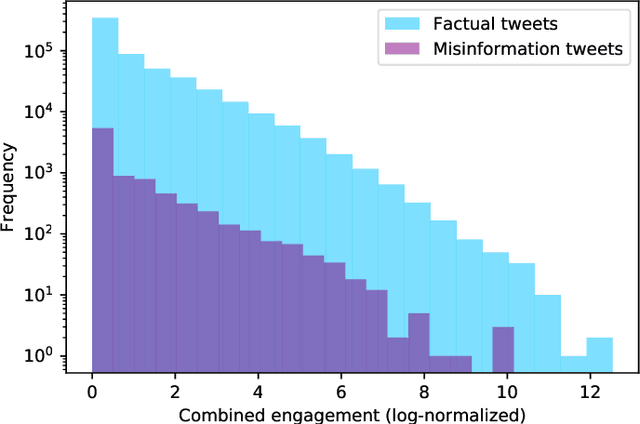
Abstract:Disinformation entails the purposeful dissemination of falsehoods towards a greater dubious agenda and the chaotic fracturing of a society. The general public has grown aware of the misuse of social media towards these nefarious ends, where even global public health crises have not been immune to misinformation (deceptive content spread without intended malice). In this paper, we examine nearly 505K COVID-19-related tweets from the initial months of the pandemic to understand misinformation as a function of bot-behavior and engagement. Using a correlation-based feature selection method, we selected the 11 most relevant feature subsets among over 170 features to distinguish misinformation from facts, and to predict highly engaging misinformation tweets about COVID-19. We achieved an average F-score of at least 72\% with ten popular multi-class classifiers, reinforcing the relevance of the selected features. We found that (i) real users tweet both facts and misinformation, while bots tweet proportionally more misinformation; (ii) misinformation tweets were less engaging than facts; (iii) the textual content of a tweet was the most important to distinguish fact from misinformation while (iv) user account metadata and human-like activity were most important to predict high engagement in factual and misinformation tweets; and (v) sentiment features were not relevant.
Facebook Ad Engagement in the Russian Active Measures Campaign of 2016
Dec 23, 2020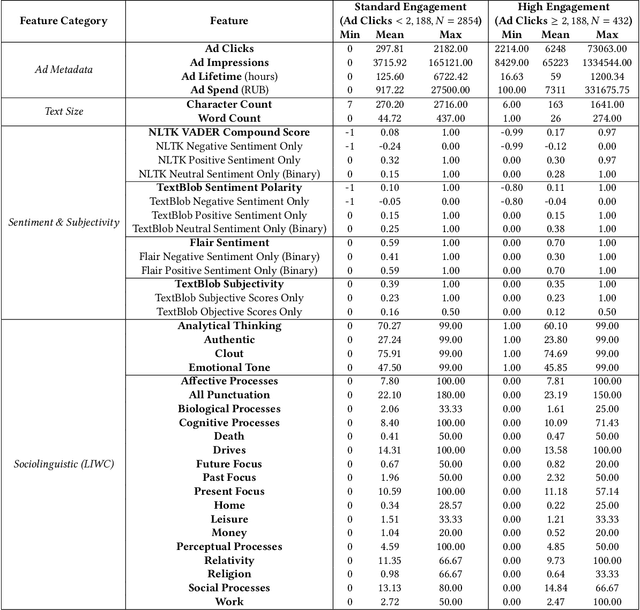
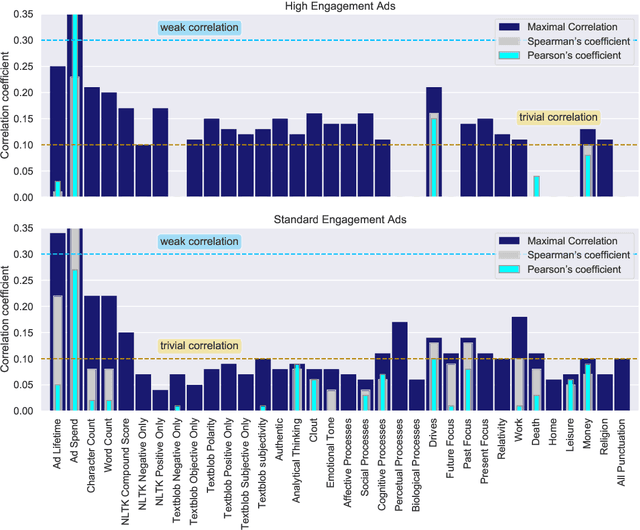
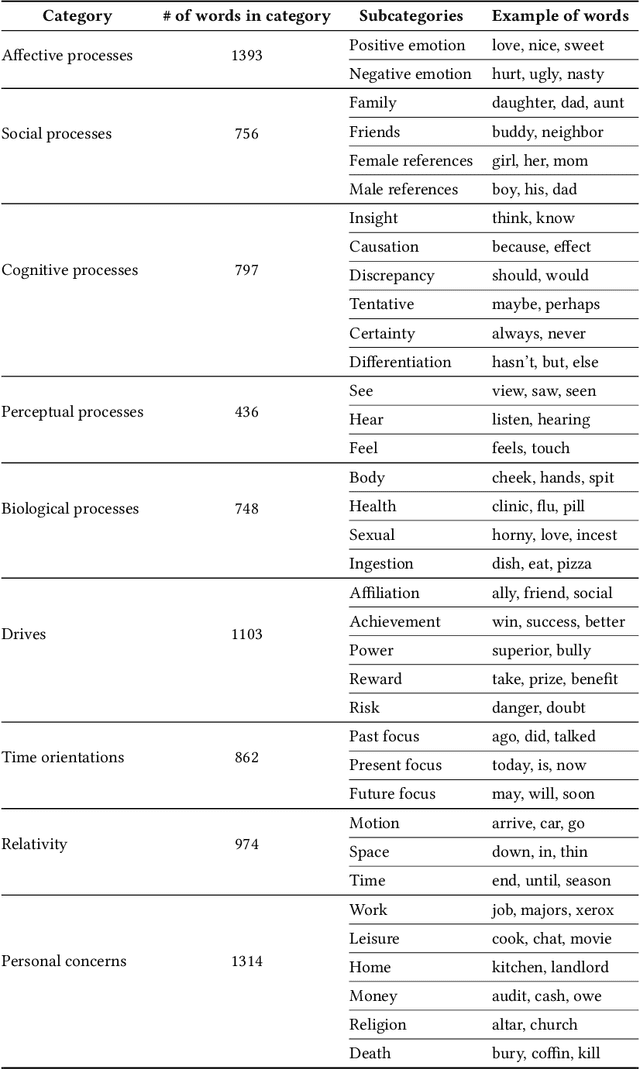
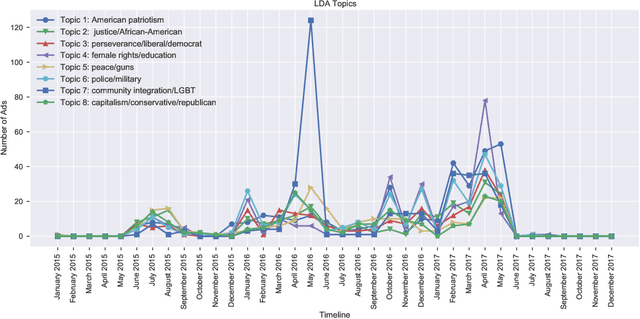
Abstract:This paper examines 3,517 Facebook ads created by Russia's Internet Research Agency (IRA) between June 2015 and August 2017 in its active measures disinformation campaign targeting the 2016 U.S. general election. We aimed to unearth the relationship between ad engagement (as measured by ad clicks) and 41 features related to ads' metadata, sociolinguistic structures, and sentiment. Our analysis was three-fold: (i) understand the relationship between engagement and features via correlation analysis; (ii) find the most relevant feature subsets to predict engagement via feature selection; and (iii) find the semantic topics that best characterize the dataset via topic modeling. We found that ad expenditure, text size, ad lifetime, and sentiment were the top features predicting users' engagement to the ads. Additionally, positive sentiment ads were more engaging than negative ads, and sociolinguistic features (e.g., use of religion-relevant words) were identified as highly important in the makeup of an engaging ad. Linear SVM and Logistic Regression classifiers achieved the highest mean F-scores (93.6% for both models), determining that the optimal feature subset contains 12 and 6 features, respectively. Finally, we corroborate the findings of related works that the IRA specifically targeted Americans on divisive ad topics (e.g., LGBT rights, African American reparations).
 Add to Chrome
Add to Chrome Add to Firefox
Add to Firefox Add to Edge
Add to Edge